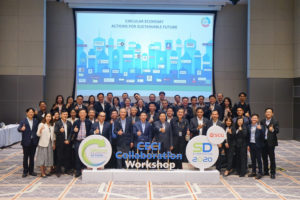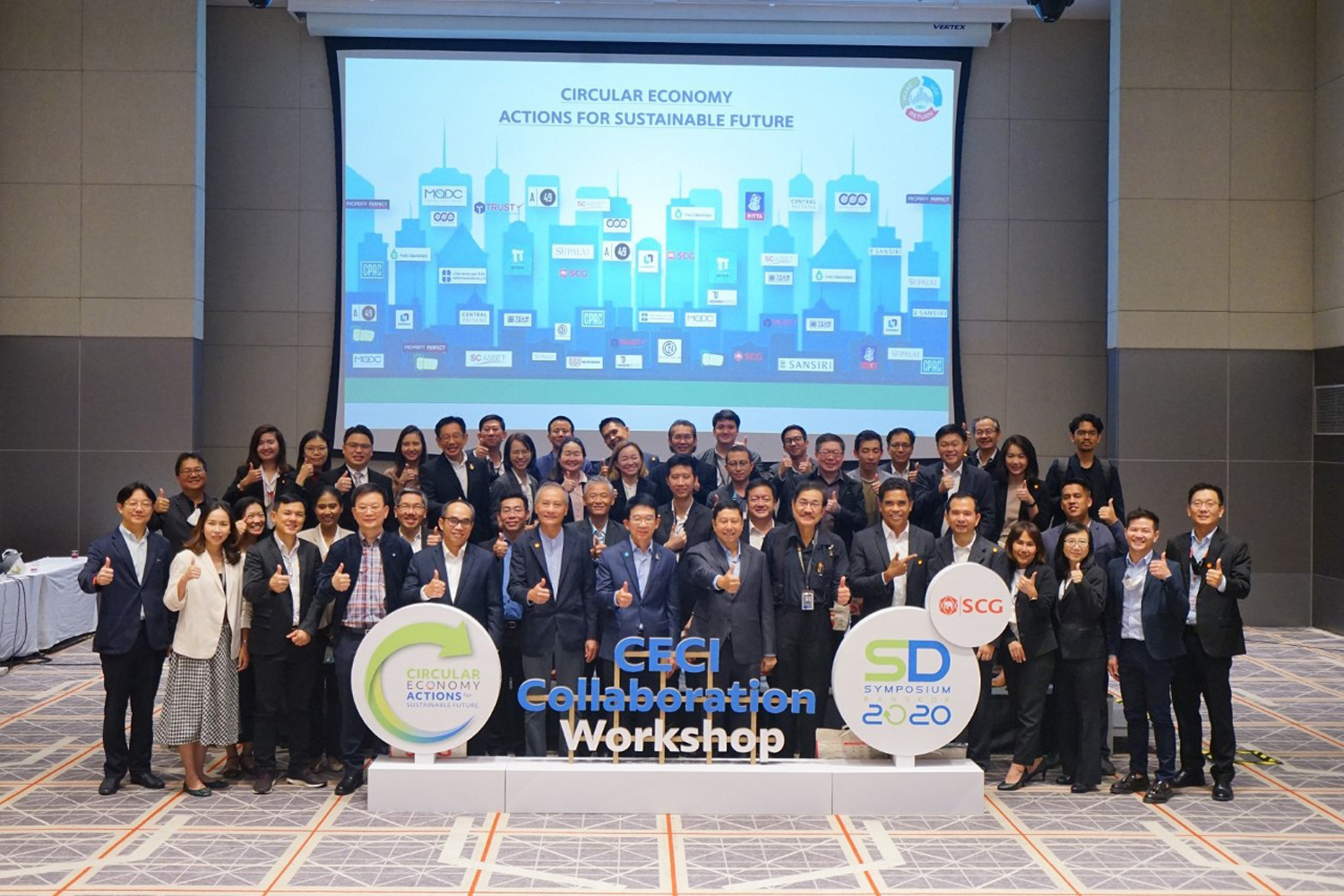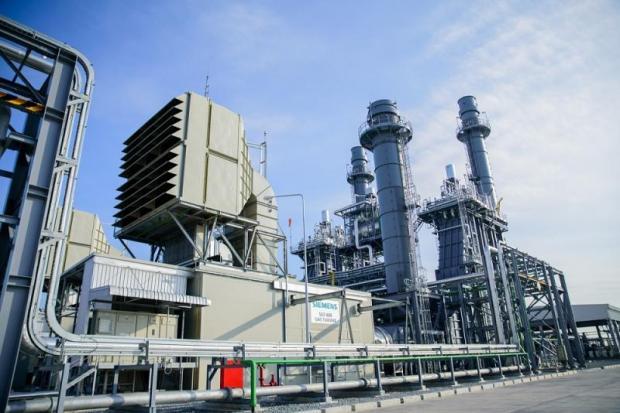 Circular Economy in Construction Industry (CECI) shaping Thai construction industry
Circular Economy in Construction Industry (CECI) shaping Thai construction industry
With Circular Economy Pushing Green & Clean construction for better environment
While the globe is facing crises from multiple directions, including a pandemic, recession, and environmental issues, the Thai construction industry is regarded as a high natural resources consumption business, producing waste that is hard to manage. As such, the business sector has come together to find a suitable construction resource management solution by applying the principles of Circular Economy.
In order to push this agenda into concrete action, there needs to be a network of cooperating business partners and the whole supply chain. It has been over two years since the collaboration between architects & project consultants, real estate developers, contractors, manufacturers & distributors, and waste management operators under the name Circular Economy in Construction Industry (CECI) began. They first teamed up at the “SD Symposium” hosted by SCG to push for circular economy to be put into action – a pivotal moment for the industry to become “sustainably improved” corresponding to Thailand’s Green Economy policy.
“On a mission to push a green construction industry”
Nithi Patarachoke, President of Cement-Building Materials Business, SCG, states that before this everyone involved in the supply chain operated individually without communication. This resulted in leftover materials and massive energy consumption. The cooperative effort allows every party to implement the principles of circular economy in the construction industry, starting with product design & development that produces the least waste, frugal usage of products, and recycling waste. This reduces the cost and usage of resources by 20% which has a positive effect on businesses, society, and the environment.
“CECI is trying to spread the idea and expand the group to national level, aiming for a green construction industry for both residential construction and infrastructure construction. Tangible results cannot be achieved individually. For example, as a manufacturer of construction materials, SCG is able to help real estate developers design suitable materials, recycle waste effectively, consume energy minimally, and find business partners in the supply chain to help find new ways to sustainably economise resources.”
“Well-thought-out from the design process, saving time, money and resources”
The circular economy and architectural design in the view of Prabhakorn Vadanyakul, Managing Director of Architects 49 Co., Ltd., is that architects only take account of beauty and functionality without thinking and planning with the material manufacturers and builders. Designs not thought through to the end of the process lead to substantial loss of materials during operations. Therefore, we need to rethink the concept of the circular economy in such a way as to reduce this problem in the construction industry which requires cooperation from all parties involved, starting at the design stage.
“We finished building a beautiful building but there was a pile of garbage out there. If we could manage that, construction would be more beautiful and efficient. Architects have to speak closely with manufacturers and contractors to bring the concept of all sectors into unison. It will help reduce time, money and resources. The concept will also help the global crisis of resource scarcity. If there is a wider expansion by creating alliances in the design business and outside, CECI is going to make a strong network.”
“Developer, an intermediary who plays an important role in driving circular economy”
Kittipong Sirilaktrakun, Deputy MD Managing Director, Supalai Public Company Limited, concurs that real estate developers play a key role in planning the development of residential buildings to be environmentally friendly. The company then sets design criteria to adopt circular economy principles for its own project development with a standard in construction that helps reduce material waste, using energy-saving technology. Another important thing is to publicise the best practices of real estate entrepreneurs to encourage information exchange and development of more efficient systems and projects.
“A developer is like a representative of its building residents and a resource user who plays a role in gathering demands and determining the entire construction activity, getting involved with architects and contractors directly. We as a developer have used the principle of the circular economy in business operations along with the work of CECI group for a while. In addition to making it possible to manage costs and make the best use out of our existing resources, promoting this idea also fosters new ideas, affecting lives of young people and others involved.”
“Understanding” leads to “Acceptance”, making possible green construction
Kecha Thirakomen, Chairman / MD, EEC Engineering Network Co., Ltd., as a design engineer and consultant for various construction projects, discloses that the circular economy is still a novelty among certain groups. Therefore, he says, we must communicate and try to understand in order to create acceptance. The CECI collaboration, expanding cooperation networks in innovation and knowledge development in the construction industry, is the beginning.
“The question ‘Why do you have to do it?’ has always been a difficult one to reply. Many people have a feeling of “Why do we have to be the first to do it?” It is difficult. It takes determination, concentration, and strength to accomplish. You can’t do it alone but in groups and networks, all the major players in the construction industry get to talk and exchange knowledge. It is a force to help each other build understanding and acceptance. If there is innovation or design for sustainability, it will give the project owner or project developer the courage to do it.“
Brainstorming the issues with all five sectors in the construction industry brings us to the following points of action:
Architects and Project Consultants propose that construction material design has to bring durability, cost-effective raw materials, prototyping, practical research and development of knowledge to the fore as well as promoting domestic products to reduce energy consumption in transportation and promote domestic business growth.
In terms of Real Estate Developers, standards for design, management and procurement should be based on the circular economy concept. This includes sharing and using technology that helps minimise waste during the construction.
Contractors are of the opinion that the use of BIM technology in construction will help reduce waste materials. The use of materials consistent with those available in the market also has to be addressed.
Manufacturers and Distributors must be involved in the design and development of products that can be recycled.
Waste Management Operators suggests that creating Big Data and using IoT to connect the waste management system will truly help drive the entire industry.
Interested parties can view details and additional content at https://bit.ly/3jo6dCA. Register to watch the SD Symposium 2020: Circular Economy: Action for Sustainable Future on 9 November 2020 from 1:30 PM to 3:30 PM online at https://bit.ly/3e4A16k.
Source: https://www.bangkokpost.com/thailand/pr/2012515/ceci-network-shaping-thai-construction-industry



